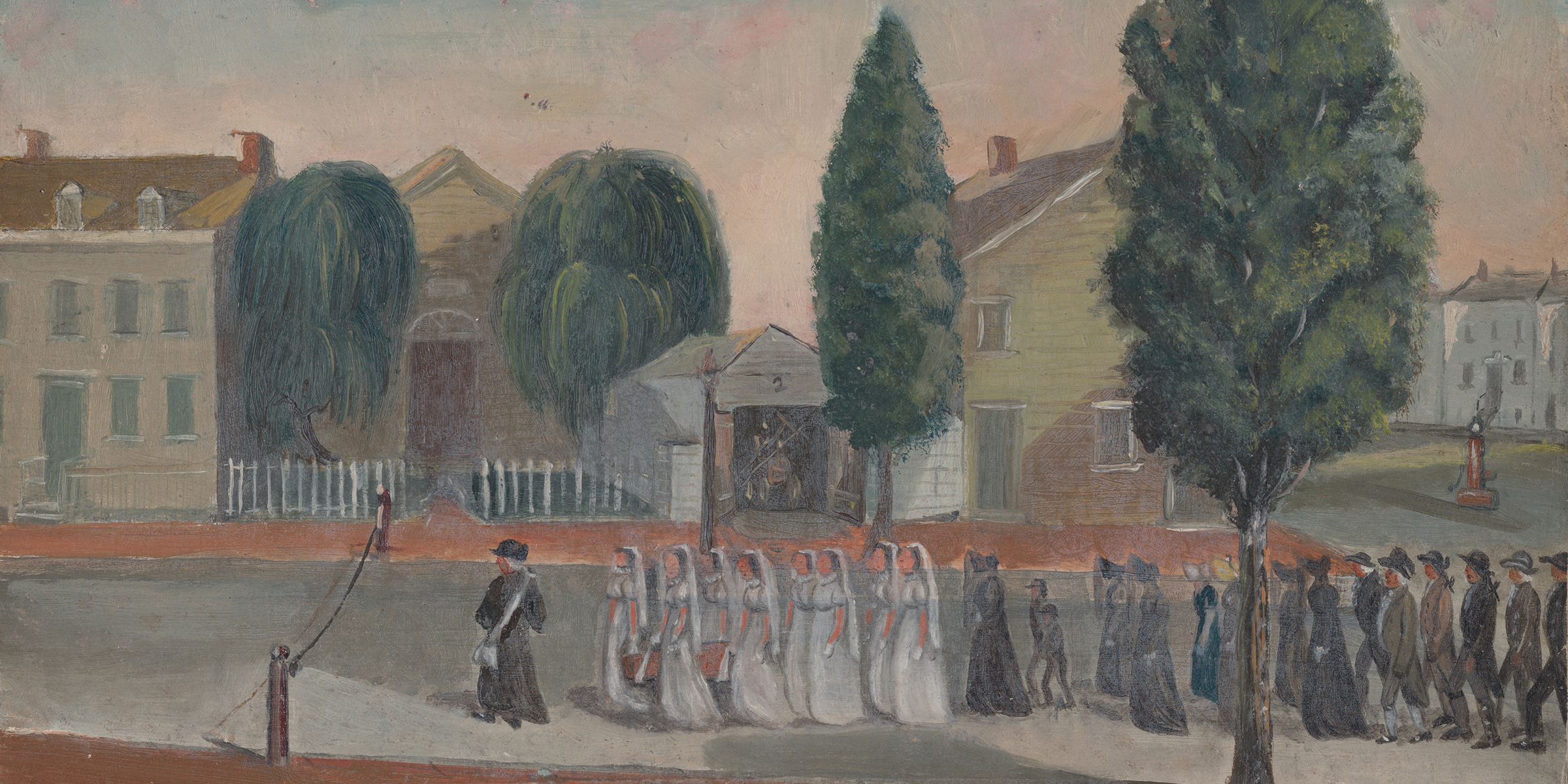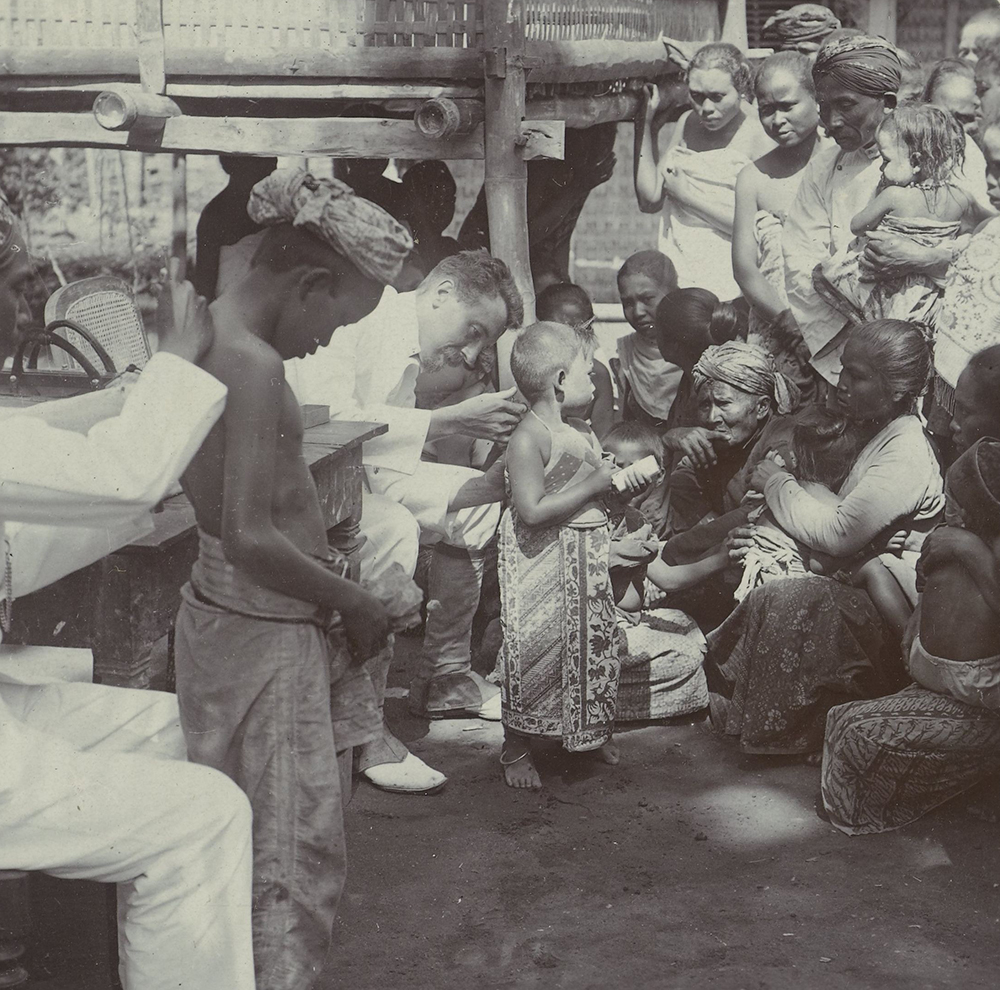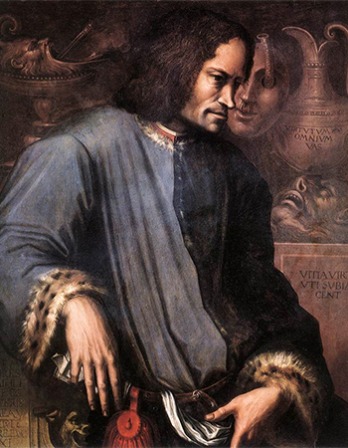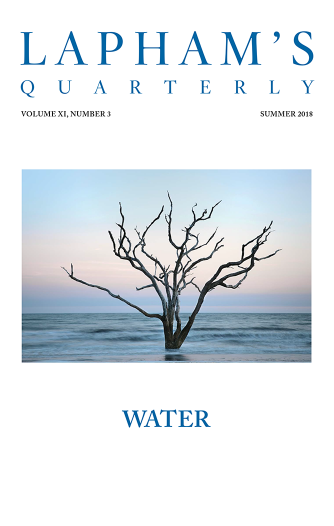All the world is topsy-turvy, and it has been topsy-turvy ever since the plague.
—Jack London, 1912What Preparations Are Due?
Daniel Defoe attempted to teach a nation how to live in a world where the next crisis is always closer than it appears.
By Travis Chi Wing Lau

Plague, by William Blake, c. 1805. Museum of Fine Arts, Boston, museum purchase with funds donated by contribution.
In a word, I would have everyone prepare themselves for death, prepare together, and prepare apart.
—Daniel Defoe, Due Preparations for the Plague, as Well for Soul as Body
Daniel Defoe’s novel A Journal of the Plague Year was published in March 1722. Through the eyewitness testimony of H.F., a saddler from the Whitechapel district of London who decides to remain in the city during the Great Plague of 1665, the book imagines one man’s attempt to avoid infection while confronting the horrors of an epidemic: the forced shutting up of houses, the plague pits barely able to contain the dead, the dissolution of social order. At age five Defoe had lived through the epidemic he would later fictionalize.
The Great Plague of 1665 had killed over 20 percent of the roughly 460,000 people living in London. The outbreak began in the small parish of St. Giles-in-the-Fields, just outside the city. When several unusual deaths, mostly of poor working-class people, were reported in 1664 and 1665, they were not directly connected to plague. While death counts from each part of London had been recorded and published in bills of mortality since 1603, these official records often underreported deaths, especially if they could lead to panic and civil unrest. This failure to identify a developing crisis and the delay in a municipal response led to sudden spikes in plague deaths by the summer of 1665, when nearly eight thousand people died in a single week. Like Dickens’ novels of social reform over a century later, A Journal of the Plague Year illuminated the tragic personal and collective costs of unpreparedness, which greatly exacerbated the suffering of thousands of Londoners dying from bubonic plague.
By 1722 Defoe, businessman and government spy, had retired from such work and moved on to journalism and fiction. His 1719 novel Robinson Crusoe, which generated countless editions, sequels, and translations, was his first extended foray into fiction. He was prolific, writing two other novels in 1722—Moll Flanders and Colonel Jack—but only A Journal of the Plague Year was built upon the plague essays he had been publishing in periodicals like the Daily Post and Applebee’s Original Weekly Journal since 1709, covering topics such as the conditions of plague-ravaged France and the cruelty of household quarantine measures. His own memories of the epidemic, coupled with his research, made A Journal of the Plague Year so evocative that the book was believed to be a memoir authored—as the title page claimed—by an anonymous “citizen” instead of a novel penned by an already famous writer known for propaganda that had led to his numerous arrests. Commentary on the book did not even start mentioning Defoe’s authorship until the late eighteenth century, when critics began to debate whether the account could be considered history. The argument continued into 1920, when a Times Literary Supplement reviewer decreed, “Defoe is historian, not romancer.”
But only a month before the publication of A Journal of the Plague Year, Defoe released a work of nonfiction on epidemics, one that traded the quotidian experience of London’s plague past with didactic advice about what to do when a plague arrives at your doorstep. The earlier work, burdened with the title Due Preparations for the Plague, as Well for Soul as Body: Being Some Seasonable Thoughts upon the Visible Approach of the Present Dreadful Contagion in France; the Properest Measures to Prevent It, and the Great Work of Submitting to It, reads, as the literary scholar Louis A. Landa suggested, like “a manual of instruction” for how to act before the time of plague. At the age of sixty-two, Defoe believed he had a moral responsibility to “encourage the great work of preparation” at the individual and national levels before the next inevitable disaster.
Recognizing the threats to the growing British Empire, Defoe admits that “we are not a nation qualified so well to resist the progress of such a distemper, or the entrance of it into our country, as others are.” The British bodily constitution, plagued by its own excesses of gluttony and consumerism, desperately required what Defoe calls “the best preventive remedies,” ranging from strict dietary regimens to daily prayer for spiritual penitence, which prepare the body and soul for epidemic crises. For governments, he calls for “national preparations” that emphasize the separation of the sick from healthy, with particular attention given to the poor, the imprisoned, and children as vulnerable groups.
While the pestilential devastation of the Black Death in the fourteenth century remained very much alive in collective memory, the British response to plague outbreaks remained ad hoc and inconsistent. Well before the isolation of the Yersinia pestis bacterium, transmitted from rodents to humans via infected fleas, plague was typically attributed to an “afflictive providence” of a wrathful God. This theory of divine punishment coexisted with notions of plague as a natural calamity whose origins were often uncertain. Even as medical and scientific writers attempted to posit rational causes for epidemics, such as miasmas or person-to-person contact, they still frequently reproduced this ubiquitous religious language surrounding plague. Due Preparations embodies epidemic theory at its moment of transformation in the eighteenth century by conceiving of plague as both corporeal and spiritual phenomena.
Defoe juggled all these competing interests in his attempt to fashion an epidemic defense that would balance the personal and political, the economic and moral, the scientific and spiritual. He argued for dazzling civic choreography in a country that had thus far responded to epidemics with jerky policy reversals and whim-driven leaps into the unknown.
Both Due Preparations and A Journal of the Plague Year directly responded to the political and medical debates that had reached a high pitch by the 1720s. The British approach to plague tended to emphasize epidemic mitigation rather than prevention. Though the separation and restriction of people believed to be exposed to disease has its roots in Leviticus, quarantine as a plague-management strategy began in 1348 with Venice’s adoption of the policy and became increasingly popular during the sixteenth and seventeenth centuries, due in part to the rise of maritime trade. These quarantine policies affected later responses to epidemics by identifying seaports as places of transmission and structuring containment by controlling human movement through social isolation. Yet the lack of a singular, coherent understanding of plague, as well as inconsistent execution of quarantine policies since the Great Plague of 1665, prompted the English government to substantially revise its approach to disease management and public health. During the early years of the eighteenth century, Queen Anne and Parliament enforced some of England’s most rigorous quarantine protocols when an outbreak of plague occurred in the Baltic area during the Great Northern War (1700–1721) between the Russian tsardom and the Swedish Empire.

Infant Funeral Procession (detail), by William P. Chappel, c. 1870. The Metropolitan Museum of Art, Edward W.C. Arnold Collection of New York Prints, Maps, and Pictures, bequest of Edward W.C. Arnold, 1954.
Under the Quarantine Act of 1710, all ships coming in and out of British ports from the Baltic were to be detained and monitored for the span of forty days (quarantain derives from the Latin quarantena and French quarante, meaning “forty”). During this time the inventory of any ship was to be opened and aired out, while all crew members or passengers needed to prove their good health or be isolated in confinement. In contrast to earlier measures, which ranged widely from bans on trade with countries suspected of infection to preventive burning of cargo, the 1710 act added the specter of harsh fines and punishments to the regulations, including authorizing the use of force by officials if they suspected a violation of the law. After reports of an outbreak in Marseille in 1720, Parliament deemed the previous act insufficient and amended it to include the “prohibition of commerce” for a year with any nation with infections; the establishment of lazarettos, designated quarantine stations to forcibly house passengers and crew; and the use of cordons sanitaires, policed boundaries around any city or town believed to have cases of infection. The severity and scale of these emendations signaled a shift in epidemic response toward aggressive intervention not only when outbreaks were reported but also if potential outbreaks were only suspected.
At the turn of the eighteenth century, medicine was undergoing revolutions in methodology drawn from seventeenth-century developments in “new science,” an experimental natural philosophy that emphasized empirical observation. Yet often the policies that would come to legislate British lives for decades failed to keep up with the constantly evolving nature of medical debates in this period. The writings of Richard Mead, who had served as Queen Anne’s personal physician toward the end of her life, provided the framework for the British government’s first attempt at organized quarantine policy as it tried to respond to its missteps in 1665. After receiving an education in physics and botany, Mead trained in medicine at Padua and returned to London to begin a medical practice. He first gained acclaim for his Mechanical Account of Poisons in 1702, which helped him become a member of the Royal Society of London and a lecturing physician at St. Thomas’ Hospital. George I’s Privy Council turned to Mead as a medical authority despite his never having worked with plague cases. Under the Privy Council’s orders, Mead laid out his theories about plague transmission in a 1720 tract titled A Short Discourse Concerning Pestilential Contagion, and the Methods to Be Used to Prevent It.
Mead thought both miasmatic and contagionist theories of infection should be used to understand plague. The former, from the ancient Greek miasma, or “pollution,” held that infection was a product of environmental factors such as contaminated water or tainted air thought to carry infectious matter. The latter posited that disease spread through individual bodies by direct contact. While Mead had reservations about the efficacy of household quarantine, he believed the quarantine of imported goods like fabrics essential, because they were more likely to be carriers of plague “effluvia” or “seeds of contagion.” He emphasized the dangers of commercial exchange, which Parliament limited in stringent quarantine policies aimed at mitigating “publick danger.” But Joseph Browne, Richard Blackmore, and other prominent physicians came out publicly against Mead’s theories as both contradictory and reductive. Browne refused to accept Mead’s attribution of plague to infected air, objects, and people and instead suggested that individuals with preexisting conditions or poor diets were inherently more susceptible to infection. Blackmore similarly emphasized individual constitution as a greater factor for infection than external sources like contaminated air. Mead’s treatise and the government’s adoption of his theories as the basis for policy provoked a pamphlet war among physicians over the best course of action for managing and preventing plague outbreaks. The intensity and volume of plague writings from this period underscores how little the medical community knew about plague’s etiology at the time of Defoe’s novel and treatise, and how much remained up for debate.
I have learned much from disease which life could never have taught me anywhere else.
—Johann Wolfgang von Goethe, 1830The infighting among physicians fueled many British citizens’ discontent with what they perceived as Parliament’s reckless disruption of British trade and unconstitutional violation of individual liberty. Frustration with the medical community’s lack of consensus and transparency, as well as Parliament’s eagerness to adopt such strict procedures of quarantine without certainty, led to a public backlash. Anonymous pamphlets joined the debate to decry the government’s deference to Mead’s medical authority despite emerging inconsistencies in his theories about causation and transmission.
This moment in British history underscores how public the conversations about plague were; citizens regularly engaged with issues of public policy and science. As Parliament discovered in the wake of highly organized campaigns against quarantine legislation, public health was hardly as simple as following medical advice. The English government had to reckon with one of public health’s central tensions, between individual choice and the needs of the wider community. Though Parliament ultimately capitulated to the outcry, it acknowledged the pitfalls of remaining too loose with its pandemic response. Even if the government had to violate the rights of English citizens, it was doing so in order to prevent another disaster at the magnitude of the Great Plague of 1665. If the empire was to have a future, the health of the nation would have to take precedence.
Make no mistake: Defoe meant for Due Preparations to be a manual. It is didactic by design, and it is also a political intervention, advocating for preventive care as a matter of national importance. In distinguishing “preparations against the plague” from “preparations for the plague” and specifying that the former were preparations for the body, the latter for the soul, he emphasizes that such preparations are not just meant for times of plague. For Defoe, preparedness is a long-term, holistic project of self-management predicated on the idea that crisis is always “impending.” While almost always pursued belatedly because individuals tend to remain distracted by the trivialities of their daily lives, “put[ting] ourselves in a posture” of preparedness can at least defer, if only for a short while, suffering and regret. Defoe acknowledges that most English people will not prepare early enough, but even the awareness that actions can be taken in advance could make a difference for survival.
To convey the urgency of his advice, Defoe likens England and the bodies of its citizens to fortresses under siege. In his metaphor of the national body, England is already infiltrated by a potential sickness within that “confederate[s] with the enemy without.” To respond to illness after it has manifested is already too late:
The evacuations or other remedies which I am now speaking of are not supposed to be so much as thought of after the infection is come; nay, not only not after it is come into the body and has touched the spirits but, I say, not after it is come into the place, for then when the enemy is at the door, all the forces of nature are to be mustered together; but all the reinforcements and encouragements that are proper to strengthen nature for her defense should be brought to her aid. No garrison ought to have their fortifications to build when the siege against them is laid; all the parts should be done and finished before, and when the siege is laid and the enemy are battering their works, the business then is to counterbatter him, harass him with continual sallies, and be vigilant, ready on all his assaults to repel his forces.
Echoing Browne’s and Blackmore’s arguments that internal constitution helps determine the body’s vulnerability to infection, Defoe points out that the English create their own vulnerabilities to plague through their habits of excessive eating and drinking. Such self-indulgence conspires with plague to weaken and eventually destroy a body that is not even aware of its own incremental self-destruction. To prevent this the body must fortify its own natural defenses through moderation and proper humoral balance. Applying military metaphors used throughout history to describe encounters with disease, Defoe declares that citizens must be alert and responsive, the foundations of their bodily garrisons laid well before plague’s attack. In the violent battle against plague, the complacent are fools holding a candle around magazines of gunpowder: they needlessly court risk and lose the battle before it is even fought, when safety was entirely possible with proper planning. Anticipating later health treatises like George Cheyne’s The English Malady (1733), Defoe’s Due Preparations characterizes the English as having a predisposition to weakness and a refusal to acknowledge it as a problem. Plague, for Defoe, merely exposes the manifold ways in which the English are unprepared for crisis at every level of society, from the individual body to the national body.
Although every citizen plays a vital role in strengthening their own bodily defenses, Defoe emphasizes that the labor of plague preparation also “must be the work of the government.” While he endorsed maritime quarantine and restrictions on free trade, he departed from Richard Mead’s more austere approach to quarantine. Defoe deliberately draws attention to the French origins of the plague outbreaks during the 1720s and the inefficacy of cordons sanitaires in curtailing the spread in Marseille and Toulon. Framing his critique in terms of national difference—and cannily emphasizing British superiority at a moment of intense commercial and political rivalry with France, which had been escalating since the Restoration—Defoe argues that strategies borrowed from France made plague outbreaks more damaging by forcing the sick and the healthy to remain in contact and wasting military and economic resources to do it. A more compassionate and appropriately English response would allow sick people to remain within city limits, while encouraging the healthy to relocate away from dense urban centers. Household quarantine effectively damned both healthy and sick by locking them up to die together. In contrast to Mead’s emphasis on what scholar Wayne Wild describes as “interdiction by the authorities,” Defoe emphasizes the “experience of the individual—how to assume such an unnatural and strict isolation of self and family, or worse, self from family (whether self-imposed or ordered by governing bodies), in order to be spared painful illness and death.” Such individualizing, like his choice to narrate the entirety of A Journal of the Plague Year through the singular experience of H.F., makes Defoe’s prescriptions from Due Preparations accessible to citizens less educated than physicians like Richard Mead or less privileged than George I.

Children being vaccinated against the plague, Malang, Java, early twentieth century. Photograph by Neville Keasberry. Rijksmuseum.
Defoe’s writings imagine public health as a national project shaped by public response. His long-standing reputation as an astute public commentator amplified the movement to repeal the Quarantine Act of 1721. Parliament amended it one year later owing to mounting protests. Because Defoe had the standing and knowledge to credibly challenge Mead, one of the most eminent physicians of the day, and the government that had aligned itself with him, Defoe was able to arm the aldermen and merchants petitioning Parliament with practical and moral arguments against other extreme measures of disease management, such as the use of cordons sanitaires and the confinement by force of individuals to pesthouses and lazarettos, both of which punitively regulated citizens to disastrous socioeconomic effects. Critics of the shutting up of homes emphasized how such measures seemed to punish and stigmatize the ill, which Defoe literalizes in the scenes of London homes being marked by red crosses to signify the infected within. In line with popular beliefs of plague as punishment, this form of quarantine effectively condemned the healthy as equally culpable just by their proximity to the sick. The English government’s well-meaning policy decisions were met with resistance because they did not sufficiently attend to lived experience. Preparedness, for Defoe, needed to be a closer collaboration between individual citizens and the state, one in which both parties understood their social and ethical responsibilities to each other. To be prepared involved much more human work.
The title of Due Preparations promised advice on how to preserve the soul as well as the body during the plague, and Defoe devotes the latter half to matters of faith. Drawing upon a sixteenth- and seventeenth-century tradition of plague writing established by the tracts of Thomas Dekker, Thomas Nashe, and William Bullein, he illustrates the urgency of spiritual preparation through a moralistic tale about an unnamed English family’s experience of the 1665 plague. Shifting from the more logical arguments about disease prevention laid out in the first section, Defoe stages a series of ongoing dialogues between a “pious and serious mother” and her two merchant sons with “heads and hearts…wholly taken up with business and the world.”
Mother: I cannot look back, child, without horror of mind upon the dreadful time, in the year 1625. I was but newly married and settled in the world, and we were all full of mirth, as you are now, and on a sudden the distemper broke out, and all our smiles were turned into lamentations and tears.
Son: It came suddenly, it may be, without any warning.
Mother: No, no, people had warning, too; but we that were young people then, just as you are now, we would take no notice of it; we were marrying and giving in marriage to the very day that it came upon us; and when good people spoke to us of repenting and preparing to meet the Lord in his day of wrath and humble ourselves under his mighty hand, we thought them just as you do now, too melancholy and phlegmatic, that they did not do well to alarm the people and put families and cities into frights and disorders; and thus we went on.
At first chiding their mother for being “melancholic” and paranoid, the brothers slowly discover the costs of not being “better prepared,” as they lose their business and earthly possessions in the chaos of the outbreak. Plague’s sudden, painful arrival gives them no time to repent and find peace with divine providence, despite their mother’s personal entreaties to prepare. Though one brother is redeemed by the will of his faithful sister moving him to penitence, the other ignores them and suffers alone for failing to build “a good and solid foundation” for his own life.
Defoe’s parable reinforces his philosophy of individual preparedness by encouraging not just bodily preparation but spiritual reckoning: “Our work, in short, is self-examination and repentance; first examination, then humiliation.” Without this humbling process of self-criticism, no amount of material preparation will be sufficient, especially if it reinforces old habits that otherwise endanger people with a false sense of security before the next visitation of the plague. Raised a Presbyterian Dissenter, which already made him critical of the state’s interference in religious belief in the name of the Anglican Church, Defoe emphasizes the interior work of spiritual reflection as the most valuable preparation. It is also the most difficult, requiring self-discipline when there seems to be no crisis at hand. By teaching his readers to comprehend the real “difference between the prepared and the unprepared,” he galvanizes them to preemptive action that will not only preserve them but also reform them for a life after crisis.
Hygienic law, like martial law, supersedes rights in crises.
—Samuel Hopkins Adams, 1913After the Great Fire of 1666, which incinerated much of central London less than a year after the plague’s visitation, Britain faced the daunting task of radically rebuilding the city while also reimagining its response to crisis with new forms of preparedness. In the form of a practical guide, Due Preparations collects and expands the insights of over fifty years of change in British medicine and governance since the Great Plague into a series of epidemic prescriptions. But why publish A Journal of the Plague Year concurrently with Due Preparations? The Journal ’s return to the events of 1665 enables Defoe to share the untold histories of those who witnessed “the face of London…strangely altered” by plague and to whom his work is indebted. The forms of devastation that H.F. witnesses are not inevitable; they are the products of multiple failures to prepare for epidemic’s contingencies. Rather than depend solely on his future-oriented treatise to convince his readers, Defoe’s retrospective novel imagines the very real personal consequences of refusing to prepare or not knowing how to prepare at all. Preparation, he suggests, is an ongoing practice of learning to live together with crisis.



